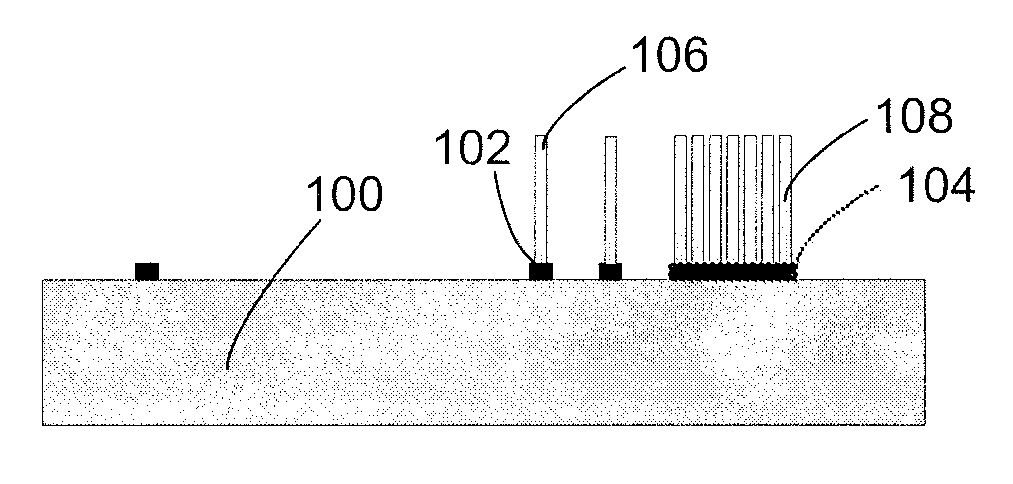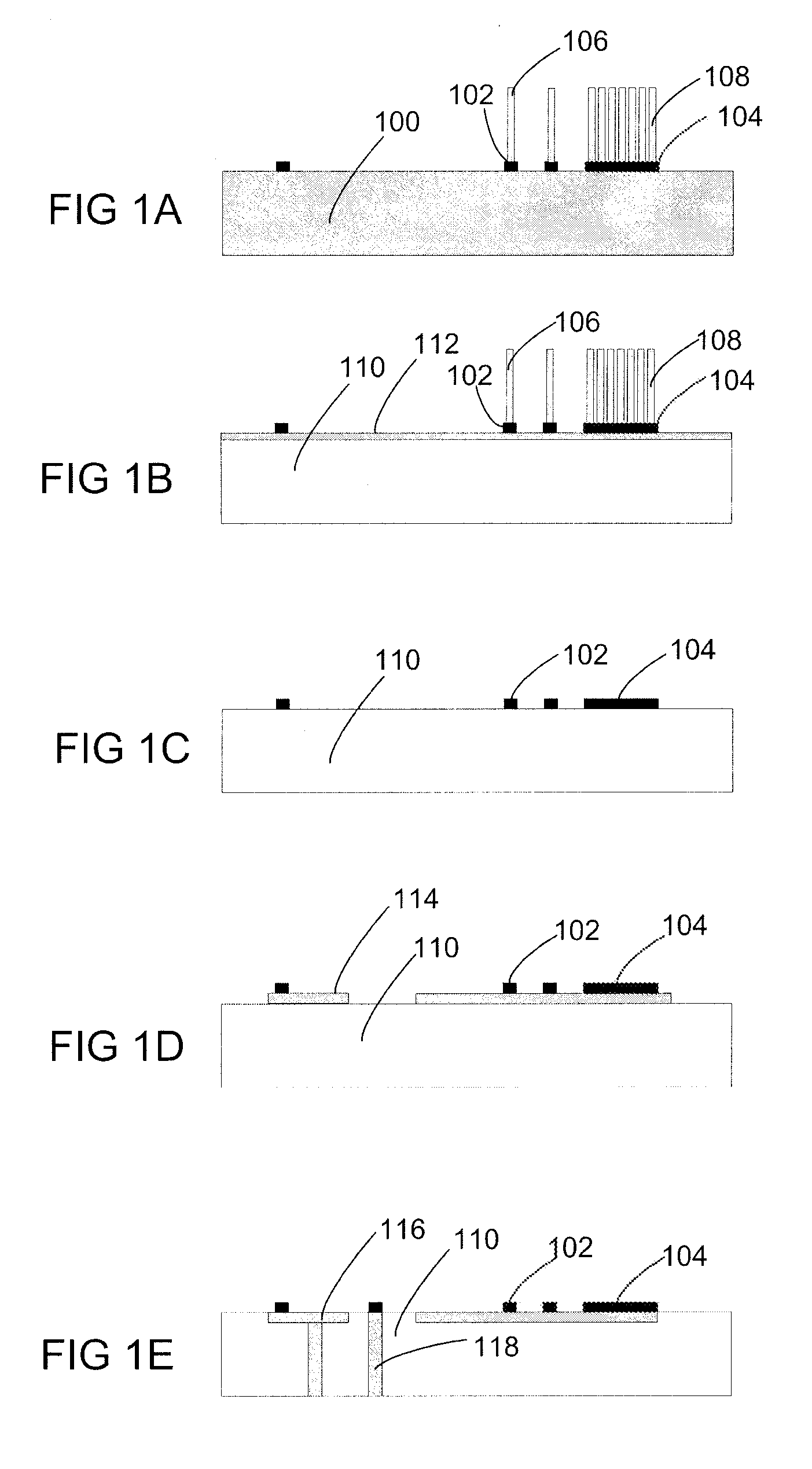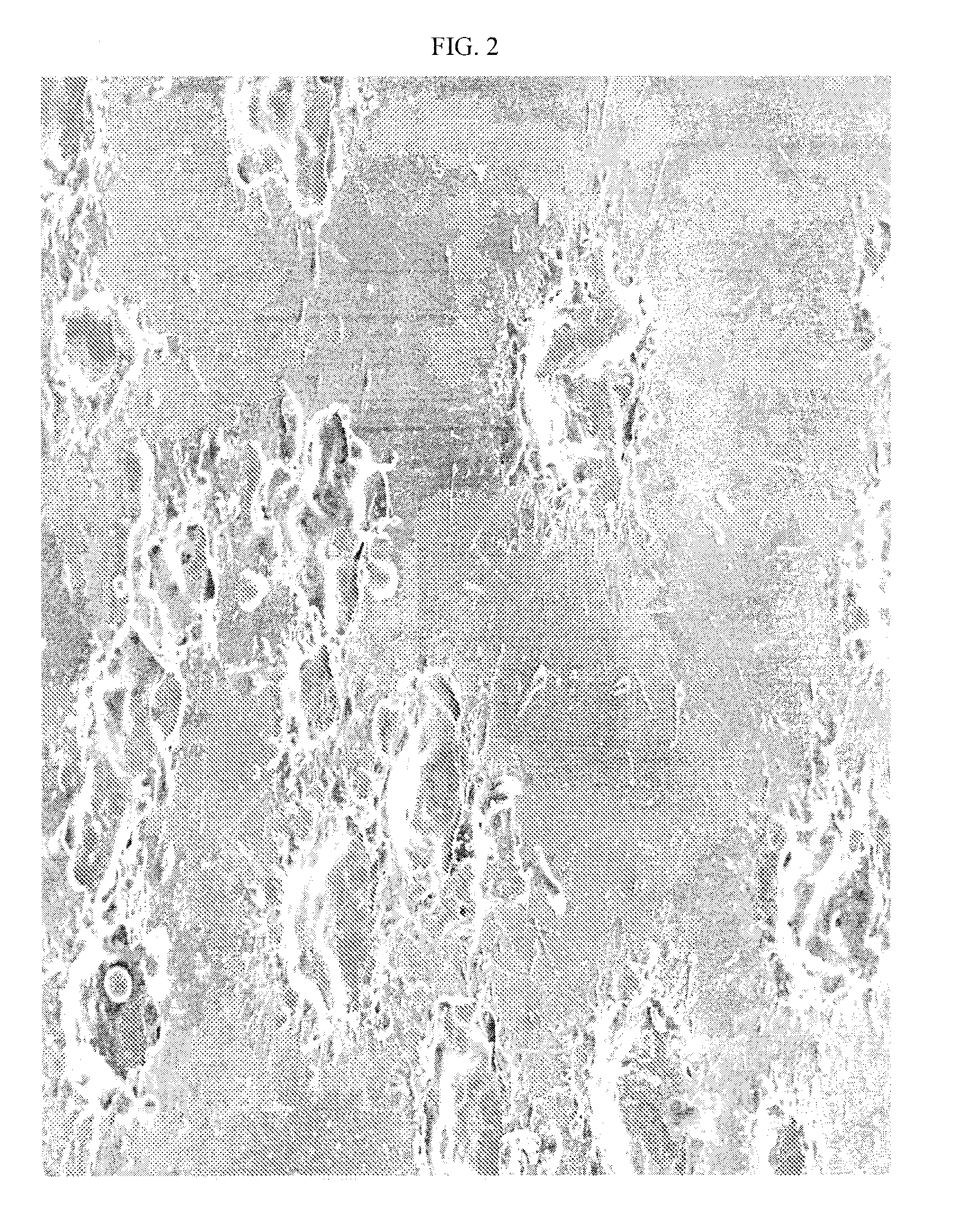Deposition and Selective Removal of Conducting Helplayer for Nanostructure Processing
a technology of nanostructures and helplayers, applied in the field of chemical vapor deposition (cvd) of nanostructures, can solve the problems of affecting the compatibility of plasma gases and substrates or metal underlayers, arcs can damage the electronic devices connected damage to the growth structure, so as to avoid parasitic growth outside the catalyst, reduce the damage effect of sparks, and eliminate limitations on plasma gas compatibility
- Summary
- Abstract
- Description
- Claims
- Application Information
AI Technical Summary
Benefits of technology
Problems solved by technology
Method used
Image
Examples
Embodiment Construction
[0073]The technology described herein relates to plasma processing, for example, growth of nanostructures (i.e., structures having at least one dimension in the order of nanometers). In some implementations, the technology also applies to processing of structures with feature sizes other than in the nanometer range, for example in the micrometer or millimeter size range.
[0074]“Substrate” is a designation of any layer or layers on which other layers can be deposited for the growth of nanostructures. Substrates can include semiconductors containing devices or metal layers or insulators. Semiconductors can include doped or undoped silicon, silicon carbide, II-VI or III-V materials (GaAs, InP, InGaAs etc) or semiconducting polymers. A substrate can also be transparent, conducting or insulating materials such as glass or indium-tin-oxide (ITO). A substrate can also include polymer layers or printed circuit boards (PCBs). A substrate does not need to be flat and can contain corrugated str...
PUM
| Property | Measurement | Unit |
|---|---|---|
| Thickness | aaaaa | aaaaa |
| Thickness | aaaaa | aaaaa |
| Electrical conductor | aaaaa | aaaaa |
Abstract
Description
Claims
Application Information
 Login to View More
Login to View More - R&D
- Intellectual Property
- Life Sciences
- Materials
- Tech Scout
- Unparalleled Data Quality
- Higher Quality Content
- 60% Fewer Hallucinations
Browse by: Latest US Patents, China's latest patents, Technical Efficacy Thesaurus, Application Domain, Technology Topic, Popular Technical Reports.
© 2025 PatSnap. All rights reserved.Legal|Privacy policy|Modern Slavery Act Transparency Statement|Sitemap|About US| Contact US: help@patsnap.com



